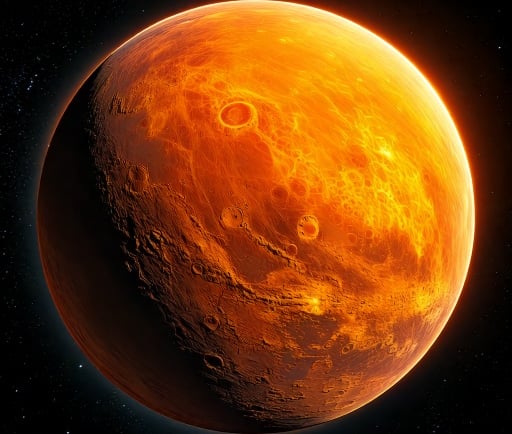The Mysterious Gas Giants of the Orion Nebula


Introduction to the Orion Nebula
The Orion Nebula, located approximately 1,344 light-years from Earth, serves as one of the most studied regions of star formation in our galaxy. Within its vibrant, colorful clouds of gas and dust, astronomers have discovered remarkable phenomena, including numerous stars in various stages of development. Among the astronomical wonders found here are the gas-like Jupiter giants, whose existence raises several intriguing questions about planet formation and cosmic evolution.
The Formation of Gas Giants in the Nebula
Gas giants, such as Jupiter, are massive planets primarily composed of hydrogen and helium. The formation theories suggest that these planets develop in protoplanetary disks around young stars, where dust particles collide and coalesce over time. In the context of the Orion Nebula, the immense amount of gas and dust provides the essential raw materials for creating such celestial bodies. However, the precise mechanisms leading to the formation of Jupiter-like giants within this nebula remain largely unexplained.
Unraveling the Mysteries
The gas-like Jupiter giants of the Orion Nebula challenge our understanding of planetary formation. The prevalent models suggest that they should form in regions with colder temperatures, far from their parent stars. Yet, within the nebula's turbulent environment, where energies are high, and stellar winds abound, the conditions appear unfavorable for the assembly of such large bodies. Despite this, observations continue to confirm the existence of these massive gas giants, signaling a need for further research and possible revisions to our current theories on planet formation.
One explanation posits that the gravitational influences of nearby stars may play a significant role in shaping these gas giants' evolving architectures. The complex interactions within stellar nurseries like the Orion Nebula could initiate processes that diverge from traditional formation theories. Additionally, the violence of stellar winds and radiation may lead to further fragmentation of the protoplanetary disk, creating new pathways for gas giant development.
As researchers develop newer technologies, such as enhanced telescopes and advanced imaging techniques, the study of the gas giant phenomena in the Orion Nebula will likely yield groundbreaking insights. The goal is to deepen our understanding of the cosmos while also unearthing the secrets surrounding these enigmatic gas-like Jupiter giants. Future observations are anticipated to refine our understanding and perhaps offer new paradigms for planetary science.
In conclusion, the gas-like Jupiter giants within the Orion Nebula present a fascinating puzzle for astronomers and astrophysicists alike. Their unexplained origins and characteristics offer a unique opportunity to expand our understanding of planetary formation while revealing the intricate dance of cosmic phenomena at play in our universe.
